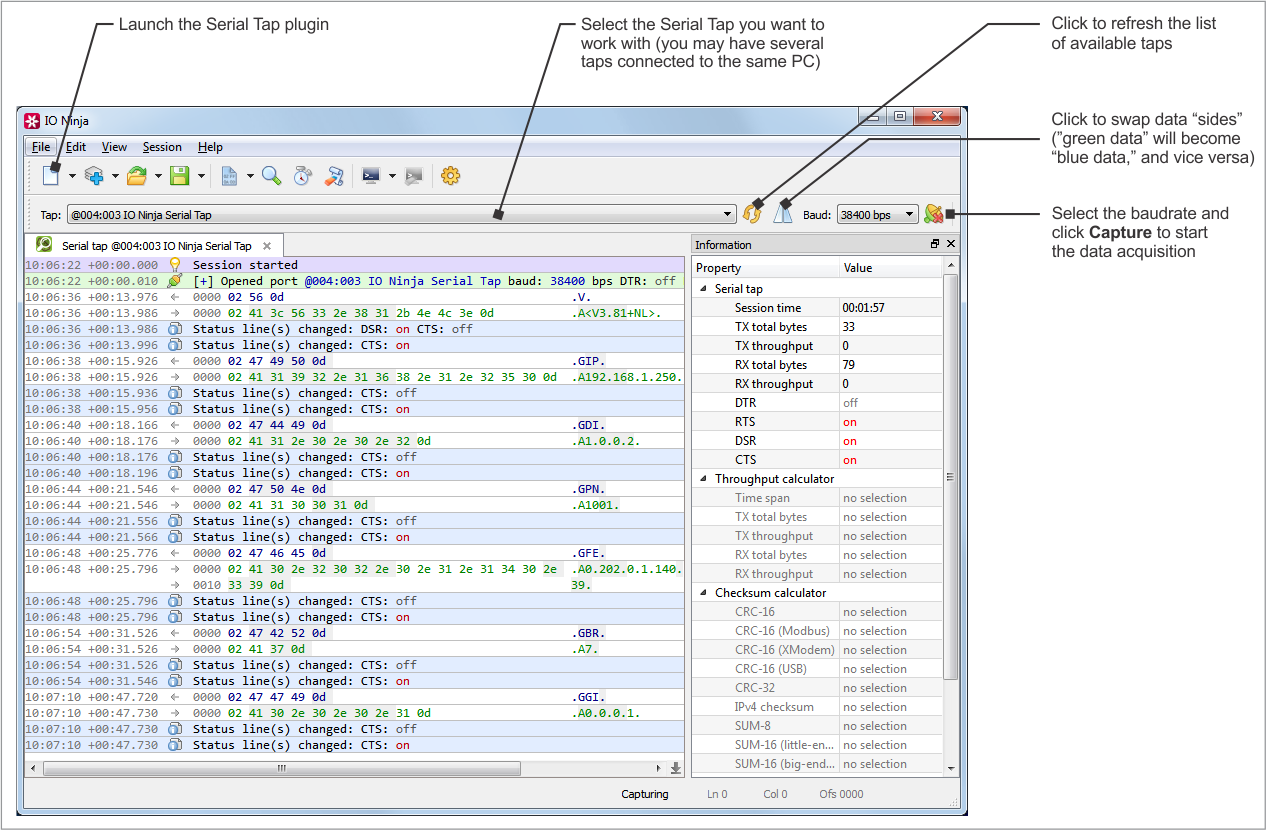To start using the Serial Tap:
•Install and run IO Ninja software (http://ioninja.com/).
•On the Serial Tap, slide the mode selection switch into the desired position depending on what interface you will be using — RS485, RS232, or UART (TTL).
•Connect into the corresponding group of terminals on the terminal block. When in the RS232 mode, you can also employ wedge RS232 monitoring method.
•Plug the Serial Tap into the USB port of your PC.
•Launch the Serial Tap plugin.
•Click on the Tap drop-down and select the Serial Tap. Note: you can connect several Serial Taps to one PC. If necessary, refresh the list of available Taps.
•Set the baudrate and click the Listen button to start the data acquisition.

A note on the Serial Tap limitations
Please note that the Tap monitors serial traffic through two independent serial-over-USB channels. The first channel monitors TX, RTS, and DTR lines, while the second channel deals with RX, CTS, and DSR lines. Because these serial-over-USB channels are independent of each other, respective timing errors are always introduced on Windows and IO Ninja levels when receiving and recording the serial data and signal state changes.
For example, let's suppose that you are monitoring serial communications between two interconnected serial devices and both devices have sent out some data at the same time. One of the USB channels will be luckier and get service first, while the other USB channel will experience a slight delay in service. IO Ninja, therefore, will show the data from one of the devices as having arrived first, and the data from the second device as having arrived second... while in reality, both devices have transmitted at the same time.